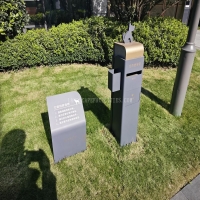Welcome to the website for landscape facilities products and knowledge.
How does the table’s design accommodate the need for quick and easy adjustments to seating arrangements?
Modern table design has evolved significantly to address the dynamic needs of contemporary spaces, particularly in accommodating quick and easy adjustments to seating arrangements. The fundamental principle driving this evolution is flexibility, achieved through various innovative design approaches that transform static furniture into adaptable solutions.
One primary method involves modular table systems. These consist of smaller, individual units that can be arranged in multiple configurations—straight lines, clusters, circles, or U-shapes—to suit different group sizes and interaction styles. Lightweight materials like aluminum composites and advanced polymers make repositioning these components effortless, often requiring minimal physical effort from a single person.
The integration of folding and expandable mechanisms represents another crucial adaptation. Tables with drop-leaf extensions or accordion-style panels can rapidly transform from compact units to large surface areas, directly influencing seating capacity. Similarly, tables with locking casters provide mobility for quick room reconfigurations while ensuring stability during use.
Height-adjustable tables offer vertical flexibility, serving as standard dining surfaces, standing desks, or presentation platforms as needed. This versatility extends to seating integration, with some designs featuring built-in or attached seating that moves in tandem with the table structure.
Visual cues in design also contribute to easy adjustments. Clear geometric lines, symmetrical patterns, and standardized connection points intuitively guide users in creating balanced arrangements. Quick-connect hardware systems further streamline the process, eliminating the need for tools during reconfiguration.
These design considerations collectively address the core requirement for adaptable spaces, allowing environments to transition seamlessly between collaborative meetings, formal dining, educational settings, and social gatherings through intelligent, user-centered furniture solutions.
Related search:

Recommendation
Outdoor cat and dog feces trash can; Community pet trash can; Metal multi-color design